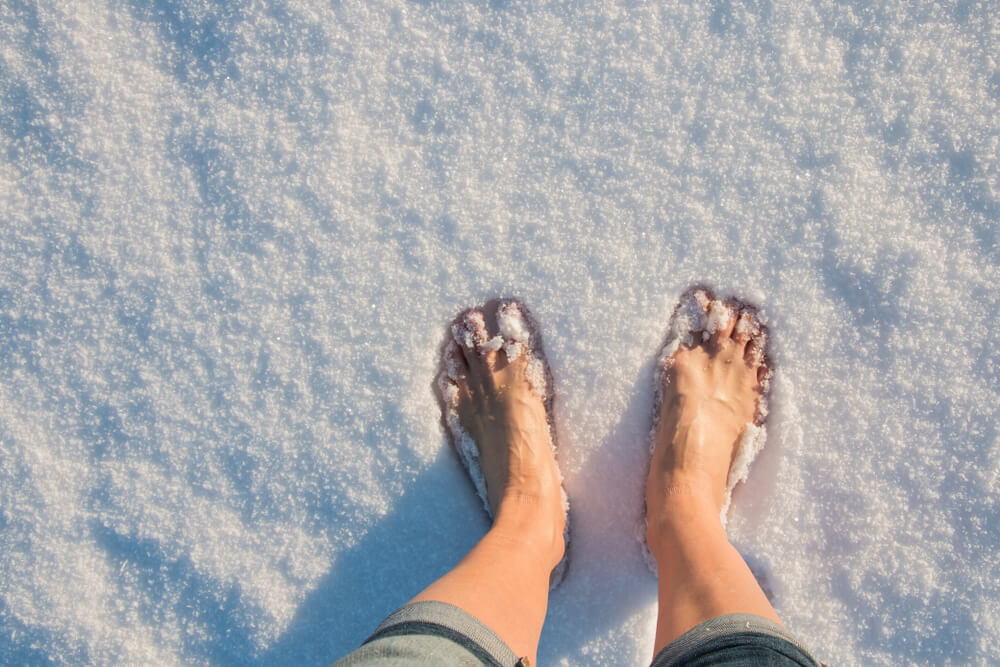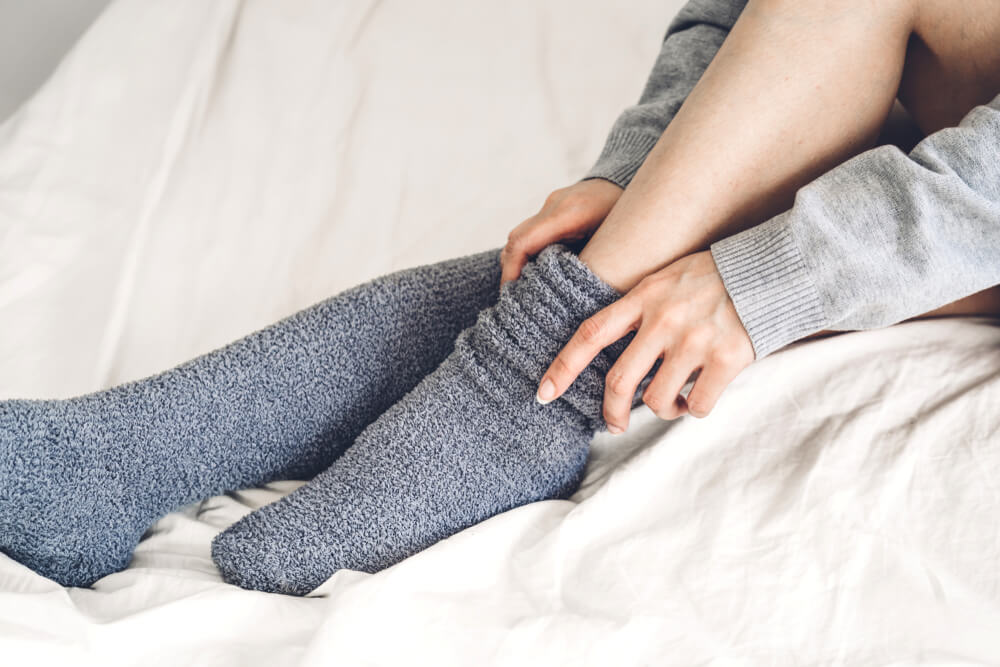Cold Weather and Vein Health: Seasonal Tips for Maintaining Circulation

As the winter months roll in and temperatures drop, you might notice your legs feeling heavier, achier, or even a little more swollen than usual. It’s easy to dismiss these changes as part of adjusting to the cold weather, but did you know that winter can directly impact your vein health? From varicose veins to poor blood circulation, cold temperatures can affect how your veins function and how well your circulatory system keeps blood pumping efficiently.
If you’ve ever wondered why your legs feel different during the winter cold or how to keep your veins healthy despite the seasonal challenges, we have the answers for you. You’ll learn the cold weather effects on veins, practical tips to promote circulation, and how to manage vein-related issues during the colder months so you can keep your legs happy and healthy no matter the weather.
How Cold Weather Affects Veins
Cold weather directly impacts your vein health. When temperatures drop, your body takes protective measures to preserve heat, which can affect how your veins function. These changes might not seem obvious at first, but they can lead to noticeable symptoms like swollen veins, poor circulation, or varicose veins.
Understanding the connection between cold weather and your veins is the first step in maintaining your vascular health during winter months. Let’s explore how cold temperatures affect your veins and the most common vein-related issues you may encounter during the colder months.
How Temperature Affects Vein Health
Your body prioritizes keeping your vital organs warm when cold temperatures hit. To achieve this, your blood vessels constrict—a process called vasoconstriction. This narrowing reduces blood flow to your extremities, including your lower legs, to conserve heat for your core. While this is a natural response, it can put added stress on your veins, especially if you already struggle with chronic venous insufficiency or varicose veins.
Vasoconstriction can also cause reduced blood circulation, which makes it harder for your veins to pump blood back to the heart, especially in your lower legs where gravity naturally slows the process. Over time, this can worsen conditions like swollen or varicose veins or increase the risk of blood clots.
In addition, your vein valves help keep blood pumping in the right direction. If they are already compromised, the strain from colder temperatures can exacerbate symptoms like heaviness, aching, or even visible varicose veins.
Winter-Specific Vein Problems
The winter months bring unique challenges to your vein health. As your body adapts to the cold weather, certain conditions can worsen and new ones may emerge. Here are the most common vein-related issues to watch for during this season:
- Poor circulation: The body’s natural response to conserve heat by restricting blood flow can lead to poor circulation, especially in the lower legs. This can cause discomfort, swelling, and a feeling of cold or numb extremities.
- Increased risk of blood clots: Reduced movement during colder months—whether from staying indoors or a sedentary lifestyle—can slow down blood flow and increase the risk of varicose veins and even deep vein thrombosis (DVT), a potentially serious condition where clots form in deep veins.
- Swollen veins: The constriction of blood vessels during the winter cold can disrupt the proper flow of blood, potentially causing vein dilation and visible swelling, especially if you already have varicose veins or venous disease.
- Fluid retention: Limited physical activity and cold temperatures can slow your body’s ability to manage fluids effectively, leading to swelling in the lower legs and exacerbating swollen ankles or vein discomfort.
- Worsening symptoms of varicose veins: The strain from colder weather can intensify varicose vein symptoms, such as aching, heaviness, and visible bulging veins. This is because reduced blood circulation makes it harder for the veins to function properly.
Understanding these winter-specific vein problems allows you to take proactive steps to protect your veins and maintain healthy blood circulation throughout the season.

Strategies to Maintain Circulation in Cold Weather
Taking care of your veins during the winter months requires a proactive approach. The combination of cold weather and reduced activity can challenge your body’s ability to maintain healthy blood flow, but small changes in your daily routine can make a big difference. By adopting targeted strategies to change certain lifestyle factors, you can support your veins, minimize discomfort, and reduce the risk of vein-related issues throughout the season.
Make Proper Clothing Choices for Vein Health
What you wear during the winter months can significantly impact your vein health. Tight or restrictive clothing like skinny jeans or heavy boots can reduce blood circulation in the lower legs and make it harder for your veins to do their job. Poorly chosen clothing can exacerbate vein-related issues like swollen veins or increase the risk of blood clots by restricting movement and adding unnecessary pressure to your veins.
To promote healthy blood flow, opt for loose-fitting, breathable layers that allow your blood vessels to function efficiently. Compression stockings are an essential addition to your wardrobe if you’re already developing varicose veins or venous insufficiency. These specialized garments provide graduated pressure that helps your veins push blood back to your heart and prevent swelling. Compression stockings are particularly effective in combating fluid retention and managing swollen ankles during prolonged periods of sitting or standing.
It’s also important to choose materials that keep you warm without overheating. Wool or thermal fabrics can help maintain your body temperature and reduce the need for extreme vasoconstriction due to the cold weather. By wearing the right clothing, you can minimize the strain on your circulatory system and enjoy healthy veins during the winter cold.
Do Indoor Exercises for Winter Vein Care
Staying active is essential for maintaining healthy blood circulation when cold weather keeps you indoors. Even small movements can help prevent poor circulation, reduce fluid retention, and lower the risk of blood clots. Here are some simple yet effective indoor exercises to support your vein health during the winter months:
- Leg lifts: Sit or lie flat and slowly raise one leg at a time, holding it for a few seconds before lowering it back down. This strengthens the muscles in your legs and promotes blood flow by encouraging your veins to work more efficiently.
- Ankle rolls: While seated, lift your feet off the floor and rotate your ankles in circular motions. This helps improve circulation in the lower legs and reduce swelling, especially if you’ve been sitting for prolonged periods.
- Marching in place: Stand in one spot and lift your knees as if you’re marching to keep your blood pumping and reduce the risk of venous insufficiency caused by staying sedentary.
- Calf raises: Stand near a wall or sturdy surface for balance, then rise onto your toes and slowly lower back down. This exercise activates your calf muscles, which act as a natural pump to support healthy blood flow and combat poor circulation.
- Seated toe taps: While seated, alternate tapping your toes and heels on the ground. This gentle movement stimulates vein dilation and keeps blood vessels active even when sitting at a desk or watching TV.
Incorporating these exercises into your daily routine can help you stay active, improve vein health, and maintain blood circulation during the winter cold.
Incorporate Other Strategies for Maintaining Circulation in Winter
Maintaining healthy blood flow during the winter months goes beyond exercise. Everyday habits and small adjustments to your routine can make a significant difference in your vein health. Here are some additional strategies to help you protect your veins and encourage proper blood circulation despite the challenges of cold weather:
- Stay hydrated: Drinking enough water supports your circulatory system by keeping your blood less viscous, making it easier for your veins to transport it. Hydration also helps reduce fluid retention and swelling in the lower legs.
- Elevate your legs: Resting with your legs elevated above heart level improves blood flow and reduces the pressure on your veins, especially after sitting or standing all day.
- Stretch regularly: Stretching your legs and feet keeps the muscles flexible and encourages blood vessels to function efficiently. Targeting tight areas like the calves and hamstrings ensures proper vein dilation and reduces strain on the lower legs.
- Adopt a balanced diet: Eating nutrient-rich foods like leafy greens, citrus fruits, and whole grains can improve your vascular health because these foods are rich in vitamins and minerals that strengthen and support healthy blood circulation.
When Should You Seek Medical Attention for Cold-Related Vein Issues?
While you can manage many vein-related issues during the winter months with lifestyle changes, certain symptoms of varicose veins may require medical attention, including:
- Severe or persistent leg pain or swelling
- Skin changes
- Sudden or unusual warmth in one leg
- Worsening varicose vein symptoms
- Cold or numb feet or toes
- Development of leg ulcers or sores
- Leg cramps or restlessness
Ignoring these signs can lead to complications such as worsening venous insufficiency or even serious conditions like deep vein thrombosis (DVT). Consulting a vein specialist as soon as you notice them is essential to protect your vascular health and prevent long-term damage.
Cold weather can mask the severity of certain vein issues, making them harder to detect until they become more serious. Seeking medical care early ensures you receive the right vein treatment and avoid complications, especially if you’re already managing varicose veins or other vein-related issues. Vein specialists can provide relief, minimize risks, and keep your veins as healthy as possible.
Protect Your Vein Health This Winter with Nelson Vein
Cold weather may bring unique challenges to your vein health, but you don’t have to face them alone. With the right strategies and timely care, you can maintain healthy blood circulation and keep discomfort at bay. Whether you’re managing varicose veins or simply looking to prevent vein-related issues, taking proactive steps this winter will make all the difference.
The team here at Nelson Vein & Surgical Services is here to support and guide you through the entire journey. Our expert team specializes in advanced, minimally invasive treatments tailored to your unique needs. From providing personalized care to answering all your questions, we’re committed to helping you achieve happier, healthier legs no matter the season. After all, no one can take better care of you than we can.
Don’t let the winter months take a toll on your veins. Contact us to schedule your consultation today and learn how we can help you protect your veins this season.
